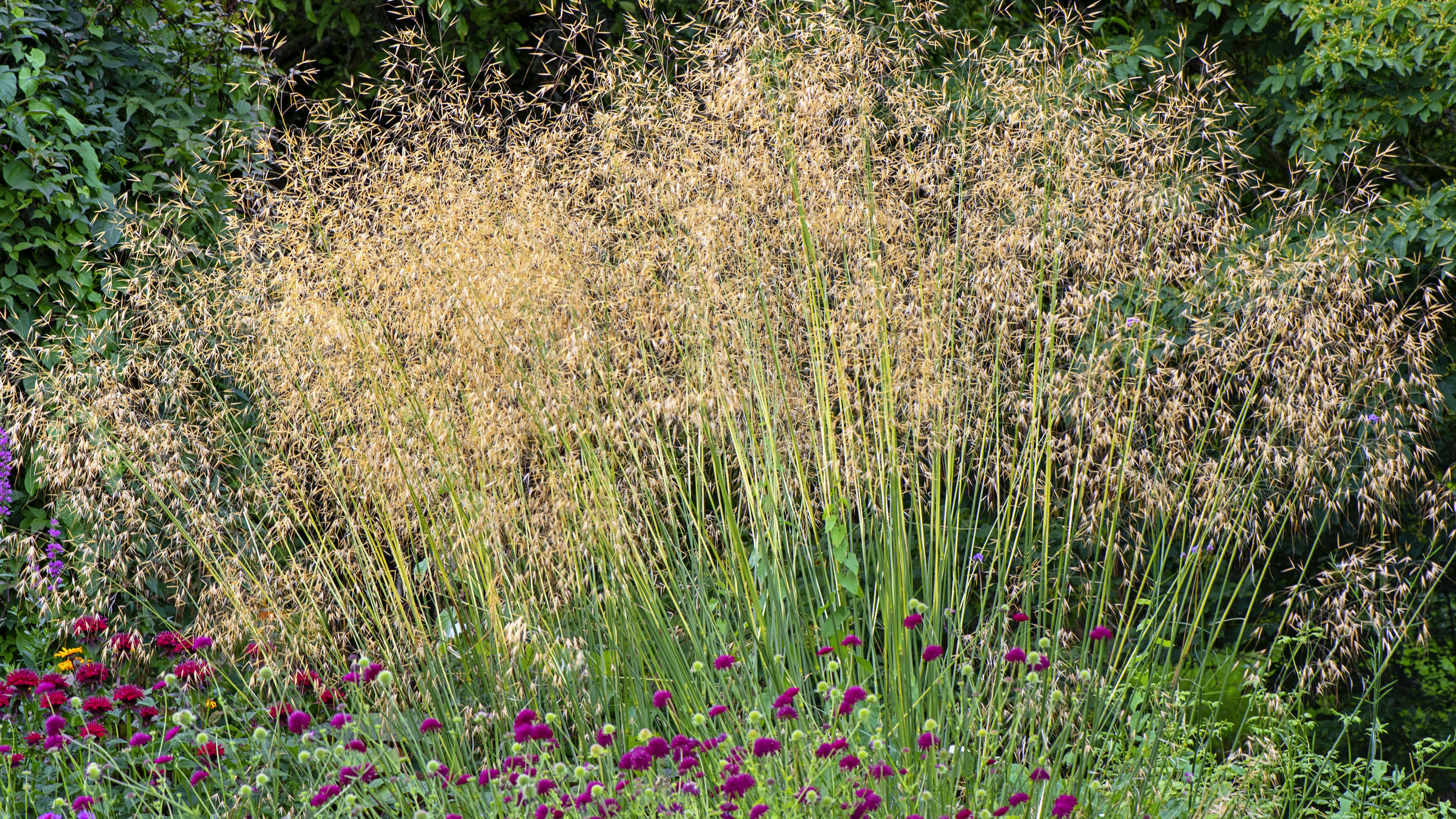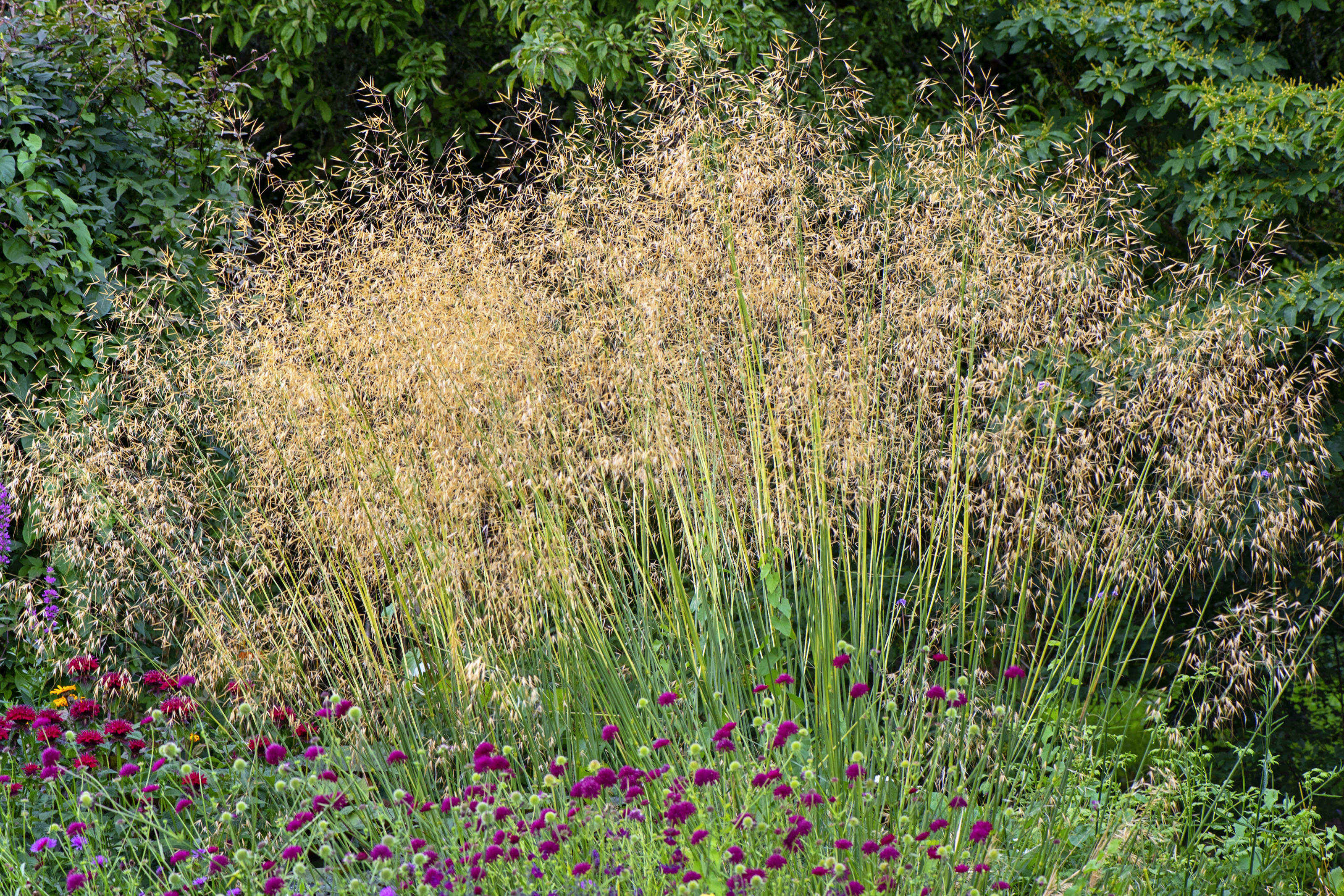Monty Don’s top tips on dividing and moving ornamental grasses
Follow Monty Don's expert tips on dividing and moving ornamental grasses for good growth and more plants for free


Ornamental grasses can bring year-round interest to your garden. They suit all sorts of garden designs, including both contemporary styles and plots that support wildlife. Small garden owners love them, too, as they can grow well in containers.
But while grasses are a low maintenance part of any garden, there is a job you need to do this month to keep them growing well. And it's no less an authority than Monty Don, celebrated gardener, author and broadcaster, who’s reminded us that May is the moment to divide and move grasses.
For Monty’s top tips, all you need to do is read on. Like the idea of bringing the wonderful structure and texture of ornamental grasses to your garden? Our guide to how to grow ornamental grasses will inspire and inform you.
Monty Don’s top tips on dividing and moving ornamental grasses

Monty Don provided the lowdown on dividing and moving ornamental grasses on his website. We’re sharing his top tips below along with some of our own.
1. Dividing and moving grasses is one of your spring garden jobs for May, according to Monty. ‘Unlike herbaceous perennials, grasses are best divided once they have started to grow vigorously,’ says Monty.
The task is well worth tackling. Dividing grasses can give you more plants for your garden without having to go out and buy new ones. But it can also be used to make a clump smaller and keep plants growing well.
One of the huge benefits of growing grasses is that they don’t generally suffer from pests and disease. However, they can be affected by rust, which is a fungal disease, and regular division can help prevent this problem developing.
2. You’ll need to get the technique right. Lift the clump, but then make sure you divide it into fairly substantial sections, Monty advises. The reason is that grasses grow slowly, so it’s important to avoid cutting them into pieces that are too small.
You can lift the grasses out of the ground with a fork or spade (we've got a guide on the best garden spades if you need a new one). Generally, they don’t have extensive roots, making the job more straightforward.
To divide grasses you could cut them through the centre with a spade, or use two forks back to back in the middle of the clump to prize it apart. Dividing a grass with tough roots? A knife might be called for, or even an axe or a saw. Work carefully!
If you’re dividing small grasses, tearing the clump apart with your hands can be feasible.

3. Clumps should be planted back into the garden straightaway. When you replant, make sure they’re at the same level as before, says Monty. The other essential? Water them in well.
It’s also vital to keep watering plants weekly, Monty explains, until the growth is strong.
4. For grasses that seed freely and form crowded clumps, Monty recommends lifting entire young plants in order to thin them out. Reposition them with greater space around them, he says.
5. Forget that some grasses have sharp leaves at your peril. Wear the best gardening gloves to avoid cutting your hands as you work.

Sarah is a freelance journalist and editor writing for websites, national newspapers, and magazines. She’s spent most of her journalistic career specialising in homes and gardens and loves investigating the benefits, costs and practicalities of home improvement. It's no big surprise that she likes to put what she writes about into practice, and is a serial house revamper.
